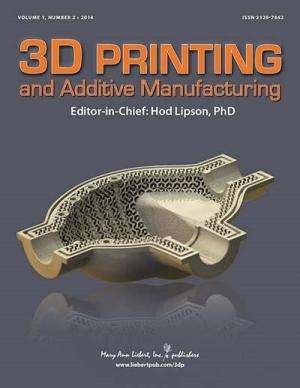New digital fabrication technique creates interlocking 3D-printed ceramic PolyBricks

An innovative system using automated 3D printing technology and advanced digital tools to create customized, prefabricated ceramic building blocks, called PolyBricks, is enabling the construction of mortar-less brick building assemblies at much greater scales than was previously possible. The new techniques that use 3D printers to produce modular ceramic bricks from a single material that then interlock and assemble easily into larger units for architectural applications are described in an article in 3D Printing and Additive Manufacturing (3DP).
Jenny Sabin, Martin Miller, Nicholas Cassab, and Andrew Lucia, of Sabin Design Lab, Cornell University (Ithaca, NY) and Jenny Sabin Studio (Philadelphia, PA), provide a detailed description of the computational design techniques they developed for the digital fabrication and production of ceramic PolyBrick components. The authors explain how they used available 3D printing technology to produce mass customized components in the article PolyBrick: Variegated Additive Ceramic Component Manufacturing (ACCM)"
"This work offers an exciting new alternative approach for 3D printing at architectural scales, without requiring the large infrastructure that most current methods require. It could open the door to many new applications" says Editor-in-Chief Hod Lipson, PhD, Director of Cornell University's Creative Machines Lab at the Sibley School of Mechanical and Aerospace Engineering, Ithaca, NY.
More information: The article is available free online on the 3D Printing and Additive Manufacturing website.
Provided by Mary Ann Liebert, Inc




















